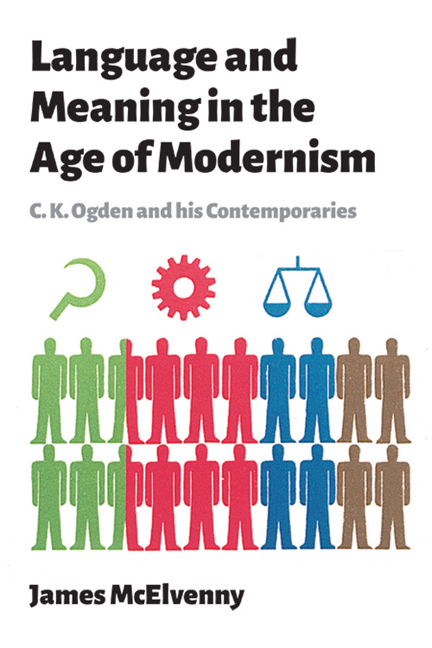Summary
The case studies of three episodes in the intellectual life of C. K. Ogden presented in the preceding pages have offered us a new perspective on attitudes and approaches to problems of language and meaning in the modernist age of the early twentieth century. Reflected in the ideas, rhetoric and plans we have examined are the characteristic modernist themes of a sense of crisis and the search for new solutions in science and technology. Ogden's efforts, and those of his contemporaries, follow the familiar pattern of the age: optimism and faith in science led to the ‘scientific’ treatment of language and meaning, the practical temperament of the age turned this into engineering projects, and finally the climate of disillusionment at the end of the Second World War precipitated their abandonment.
Our first case study looked at the philosophy of language expounded in The Meaning of Meaning and its place in the intellectual environment in which it was written. This book was Ogden and Richards’ first major contribution to the ongoing discussion on the problem of meaning, a consuming concern of the period that shaded into broader issues in religion, metaphysics, epistemology and logic. The Meaning of Meaning was both a theoretical treatise on the place of meaning in language and life, as well as a practical manual for its artful manipulation and use (as we saw in Chapter 2, §I–II).
As a synthesis of, first and foremost, the logical doctrines of Russell and the semiotic theorising of Welby, with both of whom Ogden was in personal contact, The Meaning of Meaning reflects many of the key ideas relating to meaning that had currency in the modernist period. Of utmost importance here is the perception that there is a crisis in meaning, and an urgent need to tame language, the premier bearer of meaning in the human world. The method suggested by Ogden and Richards – consisting in periphrastic definitions supported by rules of best practice in using language – is essentially a hybrid of Russell's descriptions and Welby's focus on the process of interpretation (Chapter 2, §III–IV).
- Type
- Chapter
- Information
- Language and Meaning in the Age of ModernismC.K. Ogden and His Contemporaries, pp. 154 - 163Publisher: Edinburgh University PressPrint publication year: 2018



